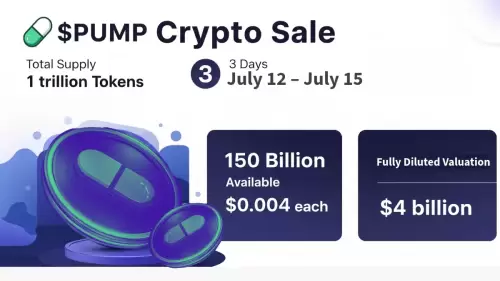 |
|
 |
|
 |
|
 |
|
 |
|
 |
|
 |
|
 |
|
 |
|
 |
|
 |
|
 |
|
 |
|
 |
|
 |
|

This tutorial will guide you through the process of building a simple C++ program that performs inference on GGUF LLM models using the llama.cpp framework. We will cover the essential steps involved in loading the model, performing inference, and displaying the results. The code for this tutorial can be found here.
Prerequisites
To follow along with this tutorial, you will need the following:
A Linux-based operating system (native or WSL)
CMake installed
GNU/clang toolchain installed
Step 1: Setting Up the Project
Let's start by setting up our project. We will be building a C/C++ program that uses llama.cpp to perform inference on GGUF LLM models.
Create a new project directory, let's call it smol_chat.
Within the project directory, let's clone the llama.cpp repository into a subdirectory called externals. This will give us access to the llama.cpp source code and headers.
mkdir -p externals
cd externals
git clone https://github.com/georgigerganov/llama.cpp.git
cd ..
Step 2: Configuring CMake
Now, let's configure our project to use CMake. This will allow us to easily compile and link our C/C++ code with the llama.cpp library.
Create a CMakeLists.txt file in the project directory.
In the CMakeLists.txt file, add the following code:
cmake_minimum_required(VERSION 3.10)
project(smol_chat)
set(CMAKE_CXX_STANDARD 20)
set(CMAKE_CXX_STANDARD_REQUIRED ON)
add_executable(smol_chat main.cpp)
target_include_directories(smol_chat PUBLIC ${CMAKE_CURRENT_SOURCE_DIR})
target_link_libraries(smol_chat llama.cpp)
This code specifies the minimum CMake version, sets the C++ standard and standard flag, adds an executable named smol_chat, includes headers from the current source directory, and links the llama.cpp shared library to our executable.
Step 3: Defining the LLM Interface
Next, let's define a C++ class that will handle the high-level interactions with the LLM. This class will abstract away the low-level llama.cpp function calls and provide a convenient interface for performing inference.
In the project directory, create a header file called LLMInference.h.
In LLMInference.h, declare the following class:
class LLMInference {
public:
LLMInference(const std::string& model_path);
~LLMInference();
void startCompletion(const std::string& query);
std::string completeNext();
private:
llama_model llama_model_;
llama_context llama_context_;
llama_sampler llama_sampler_;
std::vector
std::vector
std::vector
llama_batch batch_;
};
This class has a public constructor that takes the path to the GGUF LLM model as an argument and a destructor that deallocates any dynamically-allocated objects. It also has two public member functions: startCompletion, which initiates the completion process for a given query, and completeNext, which fetches the next token in the LLM's response sequence.
Step 4: Implementing LLM Inference Functions
Now, let's define the implementation for the LLMInference class in a file called LLMInference.cpp.
In LLMInference.cpp, include the necessary headers and implement the class methods as follows:
#include "LLMInference.h"
#include "common.h"
#include
#include
#include
LLMInference::LLMInference(const std::string& model_path) {
llama_load_model_from_file(&llama_model_, model_path.c_str(), llama_model_default_params());
llama_new_context_with_model(&llama_context_, &llama_model_);
llama_sampler_init_temp(&llama_sampler_, 0.8f);
llama_sampler_init_min_p(&llama_sampler_, 0.0f);
}
LLMInference::~LLMInference() {
for (auto& msg : _messages) {
std::free(msg.content);
}
llama_free_model(&llama_model_);
llama_free_context(&llama_context_);
}
void LLMInference::startCompletion(const std::string& query)
免責聲明:info@kdj.com
所提供的資訊並非交易建議。 kDJ.com對任何基於本文提供的資訊進行的投資不承擔任何責任。加密貨幣波動性較大,建議您充分研究後謹慎投資!
如果您認為本網站使用的內容侵犯了您的版權,請立即聯絡我們(info@kdj.com),我們將及時刪除。
-

- Kucoin,AI激勵措施和遊戲RWA:一個新時代?
- 2025-07-08 14:30:12
- 探索Kucoin在遊戲領域內AI驅動的激勵措施和現實世界資產(RWA)中的戰略舉動。
-

-

- 比特幣獲得和戰略報告:什麼是HAP?
- 2025-07-08 15:10:12
- 潛入最新的比特幣收益,主要參與者的戰略舉動以及模因硬幣熱潮。在推動加密貨幣市場的原因上獲取勺子。
-

-

-

-

- Pumpfun,Soken Sale和Gate Exchange:有什麼交易?
- 2025-07-08 14:50:12
- 泵。 Fun計劃的泵代幣在門交易所面孔的不確定性。是延遲,取消還是像往常一樣瘋狂?
-

- 隱私,聲譽和MEXC列表:瀏覽Web3景觀
- 2025-07-08 14:55:12
- 探索Web3中隱私,聲譽和交換清單的交集,重點關注R0AR的MEXC列表和越南的監管進步。
-

- 以太坊佔據了中心地位:位數字的納斯達克飛躍和財務未來
- 2025-07-08 15:00:12
- 位數字溝渠比特幣用於以太坊,標誌著戰略轉變。這是加密在納斯達克的新時代的開始嗎?






























































